The following are a few news items from the January 2024 issue.
CONTAINER FLEETS GETTING OLDER
Despite the well documented plethora of new container ships on order, currently being built and delivered a report from shipping analysts BIMCO suggests that the world’s container fleet is the oldest it has ever been. Perhaps surprisingly the average age of vessels is also higher than the other major sectors as Niels Rasmussen, chief shipping analyst at BIMCO explained, “Container ships have reached their highest average age yet at 14.2 years, the highest average age of the three main shipping sectors. The dry bulk fleet has an average age of 11.9 years whereas tankers on average are 12.8 years old. “It transpires that 21% of container ships are over 20 years old but that 92% of these (1,214) have a capacity of 5,999 TEU or less, with three quarters (994) in the 0-2,999 TEU feeder market. Therefore, whilst the new, giant 24,000+ TEU ships continue to grab the headlines a high proportion of their smaller brethren are nearing retirement with relatively few newbuilds (just 417 in the 0-5,999 TEU capacity bracket) in the pipeline. An even more revealing statistic according to Rasmussen is that only 30% of all container ships are less than 10 years old and therefore built according to slow steaming principles allowing for lower energy consumption per container carried. Nevertheless, ending on a more optimistic note he concluded, “The order book contains 750 ships to be delivered before the end of 2025. Depending on the number of ships recycled, this should allow the average age to decline and the average energy efficiency of ships within all size segments to increase. In addition, the share of ships able to use alternative low-carbon fuels will increase”.
TRANSMASTER SAVE THREE FROM THE BREAKERS
Russian container line Transmasters has taken three more feeder vessels on charter which were originally destined for scrap. These are the 2001 vintage Wan Hai 261, Wan Hai 262 and Wan Hai 263 which have been acquired by an undisclosed Chinese owner and renamed Honrise, New Everprosper and Star Bright.
BULK AND TANKER NEWS
After a failed merger last year, the on-going boardroom battle for control of Euronav finally appears to have been resolved, with John Frederiksen’s Frontline purchasing 24 VLCCs from the Euronav fleet for a total of $2.3 billion. In return and partly to fund the transaction Frontline and Famatown Finance, another Frederiksen company, are selling their 26.12% stake in Euronav to the Saverys family-owned Compagnie Maritime Belge (CMB). All the tankers acquired are in the 300,000 dwt bracket with the oldest being the 2015 Daewoo built Liberian flag Dominica (above) and the most recent being a trio of sister ships Clovis, Camus and Cassius which were all completed by Hyundai Samho Heavy Industries (HSHI) in 2023. All bar two of the two dozen ships were built in Korea, predominantly by HSHI or Daewoo, with the nine newest ships, including the four year old Derius being fitted with scrubbers. The move increases the Frontline fleet to 89 ships, making it the largest, in terms of dwt tonnage, publicly owned pure play tanker company. No sooner had Euronav sold the 24 ships than it announced it was taking out the option on a second methanol-ready VLCC from Behai Shipbuilding, the original order was placed back in August 2023. Featuring 6,000m3 methanol fuel tanks the new ships form part of a clear company strategy to ‘future proof’ its fleet by adopting green technologies.
Despite being hit by a Russian attack in September, efforts to re-establish Odesa as a key Ukrainian grain exporting port appear to be gaining momentum. Two more panamax bulkers successfully loaded grain in the Odesa region, and crucially emerged unscathed according to the Ukrainian Centre for Transport Strategies. The vessels in question were the Liberian flag 75,800 dwt Xin Shun (above) which sailed from Odesa and the 71,550 dwt Peter S which used the nearby port of Chornomorsk.
CRUISE NEWS
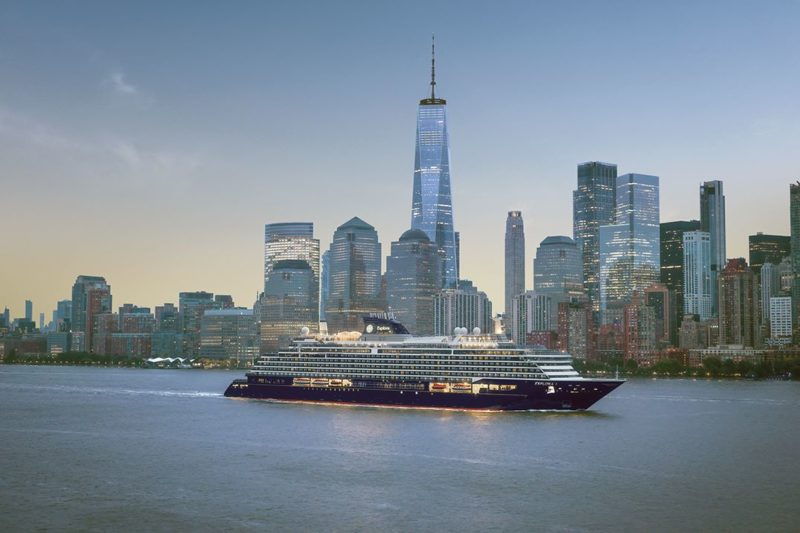
Explora Journeys’ first of six luxury ships, the 63,621gt/2023-built Explora I (above), was officially named by renowned marine biologist and oceanographer Dr. Sylvia Earle at Manhattan Cruise Terminal, New York City, on 12th October 2023. The event was attended by distinguished guests from around the world, international journalists, key travel partners of Explora Journeys and senior representatives from MSC Group, who all enjoyed a gala dinner following the ceremonial launch and an evening of celebrations. A subject of the Newbuild of the Month feature, the luxury ship spent the autumn in North America, the winter in the Caribbean and spring 2024 on the U.S. West Coast and Hawaii before returning to Europe in Summer 2024 for a series of sailings in the Mediterranean. The 63,621gt/2024-built Explora II will enter service in summer 2024 and operate until April 2025 in the Mediterranean and the Middle East. The Explora III and Explora IV will both be powered by LNG and enter service in 2026 and 2027 respectively. The Explora V and Explora VI will enter service in 2027 and 2028 respectively. The latter two ships will pursue the use of liquid hydrogen with fuel cells for their hotel operations while docked in ports to eliminate carbon emissions with the vessels’ engines switched off.
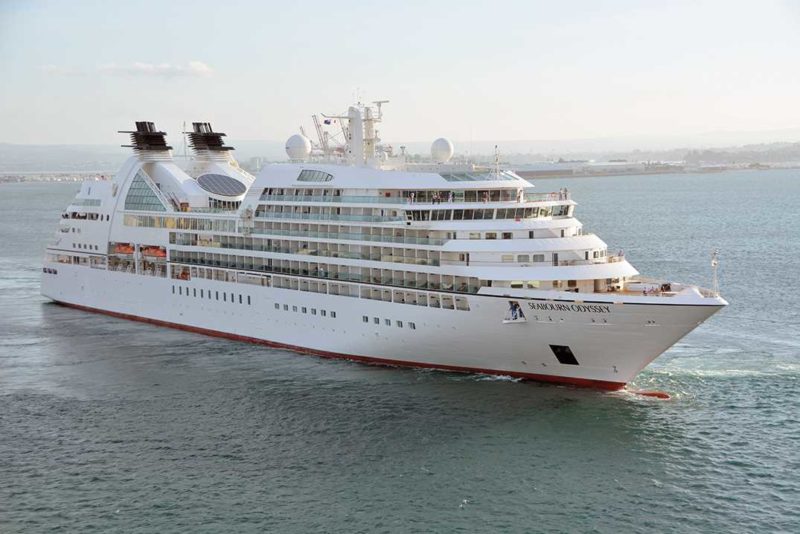

MOL Cruises, Ltd. announced on 12th October the launch of a new cruise brand, Mitsui Ocean Cruises and introduced the name of the new ship being built as the Mitsui Ocean Fuji, for delivery in December 2024. The newbuild will be MOL Cruises’ second ship in addition to the Nippon Maru. Mitsui Ocean Cruises also announced that the Mitsui Ocean Fuji will embark on a world cruise in April 2025. The 32,477gt/2009-built and 198m long all-suite ship, built as the Seabourn Odyssey (above), was purchased from Seabourn Cruise Line Limited in March 2023. The ship has 229 passenger suites and can cater for 458 guests.
FERRY NEWS
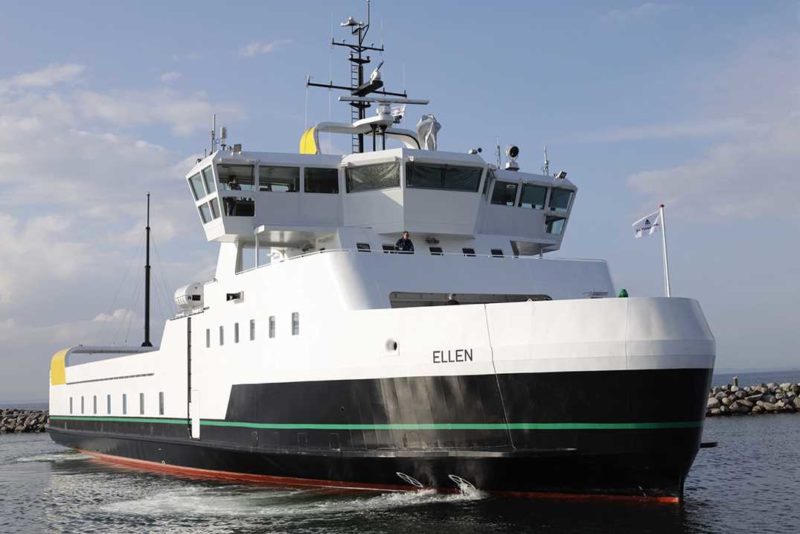
Aerofaergerne’s 996gt/2019-built all-electric ferry Ellen (above) was still out of service indefinitely according to an update on 16th October. The revolutionary ferry had suffered a fire on 11th July in a cell in one of the 840 batteries that power the vessel. The 4.3 MWh battery pack, produced by Leclanche in Switzerland, enables the ferry to sail back and forth between Søby and Fynshav in the Funen archipelago in southern Denmark. The mayor of Ærø Municipality has been reported as saying that no date had been set for the vessel’s return to service, but she may operate again before the end of 2023. However, any return to service looked likely to require the use of the existing batteries that were undamaged, and at a reduced service speed. It is ultimately the Danish Maritime Authority that decides when the Ellen will sail again as their approval is needed. The DMA did not wish to give a timescale. This whole situation does throw considerable doubt over the viability of 100% electric vessels. A non-operational vessel is an expensive one to any operator and the Ellen only entered service in August 2019 with much fanfare. A hybrid ship could have operated on conventional power until repairs were made to the batteries, plus the volatility of the battery cells is being increasingly reported far and wide.
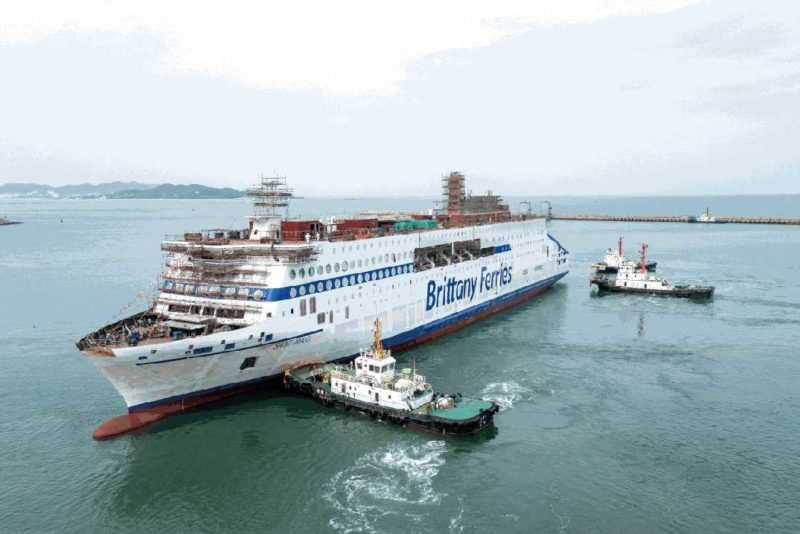
Brittany Ferries’ custom-built newbuild E-Flexer Saint-Malo was floated out at the shipyard in Jingling, China (above) on 11th October. The news of this event came shortly after the first section of keel was laid for newbuild W0275, sister ship Guillaume de Normandie on 6th October. The cleaner-greener duo represents the next step in Brittany Ferries’ journey to a sustainable future. They are the last of five new vessels that will have joined the fleet between 2019 and 2025. Together it represents the biggest fleet renewal investment in the company’s 50 year history. The LNG/hybrid Saint-Malo and Guillaume de Normandie go one step further than their fleet mates, the 41,716gt/2021-built Salamanca and 41,716gt/2022-built Santona. They will be shore power ready, which means they can plug in to the quay when in ports like Portsmouth (shore power coming in 2025) and St. Malo and Caen (shore power ready by 2027). Shore power promises to cut CO2 emissions by around 15%. That’s in addition to a 20% reduction (compared with diesel) that comes from an LNG-powered engine. There are also virtually no air quality pollutants at any point in a journey, at sea, in ports or when alongside at quay. The next step for the Saint-Malo will be the sea trials in 2024, followed by delivery of both ships to Brittany Ferries. Thereafter, the duo will make the voyage to Europe via the Suez Canal to be welcomed into the fleet in 2025. They will link Portsmouth with St. Malo and Caen.
The company then announced on 18th October that it had been awarded Green Marine Certified Shipowner accreditation for the fourth year in a row. The award was made at a ceremony in Bilbao, one of the ports served by the company and the location of a brand-new LNG bunkering terminal. Opened in July 2022, the facility is already fuelling Brittany Ferries’ newest LNG-powered ships.
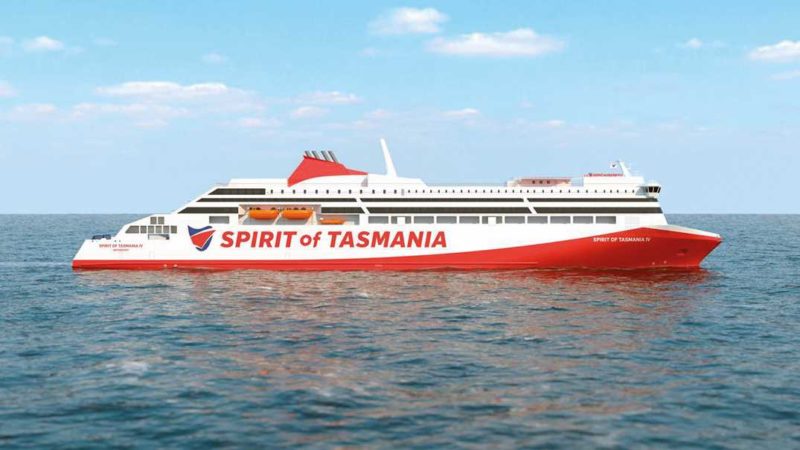
Rauma Marine Constructions celebrated the launch and christening of the 48,000gt/2024-built Spirit of Tasmania IV at the Rauma shipyard. The ship is being built for TT-Line in Tasmania and is the first of two identical Ro-Pax ferries that will replace former Superfast vessels, the 29,338gt/1998-built Spirit of Tasmania I and Spirit of Tasmania II. The new vessels will operate across the Bass Strait between Geelong, Victoria, and Devonport, Tasmania and have been specially designed to undertake this specific route. The Spirit of Tasmania IV was christened at the RMC shipyard by her godmother, Deborah Grainger from Australia. The bottle smashed on the bow was a sparkling wine from Tasmania, Jansz Vintage Cuvee. The keel laying of the newly launched ship was celebrated at Rauma shipyard exactly one year previously in October 2022. The production of the vessel’s sister ship, the Spirit of Tasmania V, was celebrated with a traditional steel cutting ceremony in December 2022. The new ships are 212m long with a 31m beam, a 7m draught, a service speed of 26 knots and will offer 301 passenger cabins. The capacity of each ship is 1,800 passengers and 3,700 lane metres of rolling cargo.

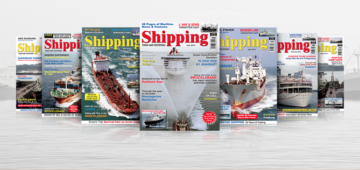



Comments
Sorry, comments are closed for this item